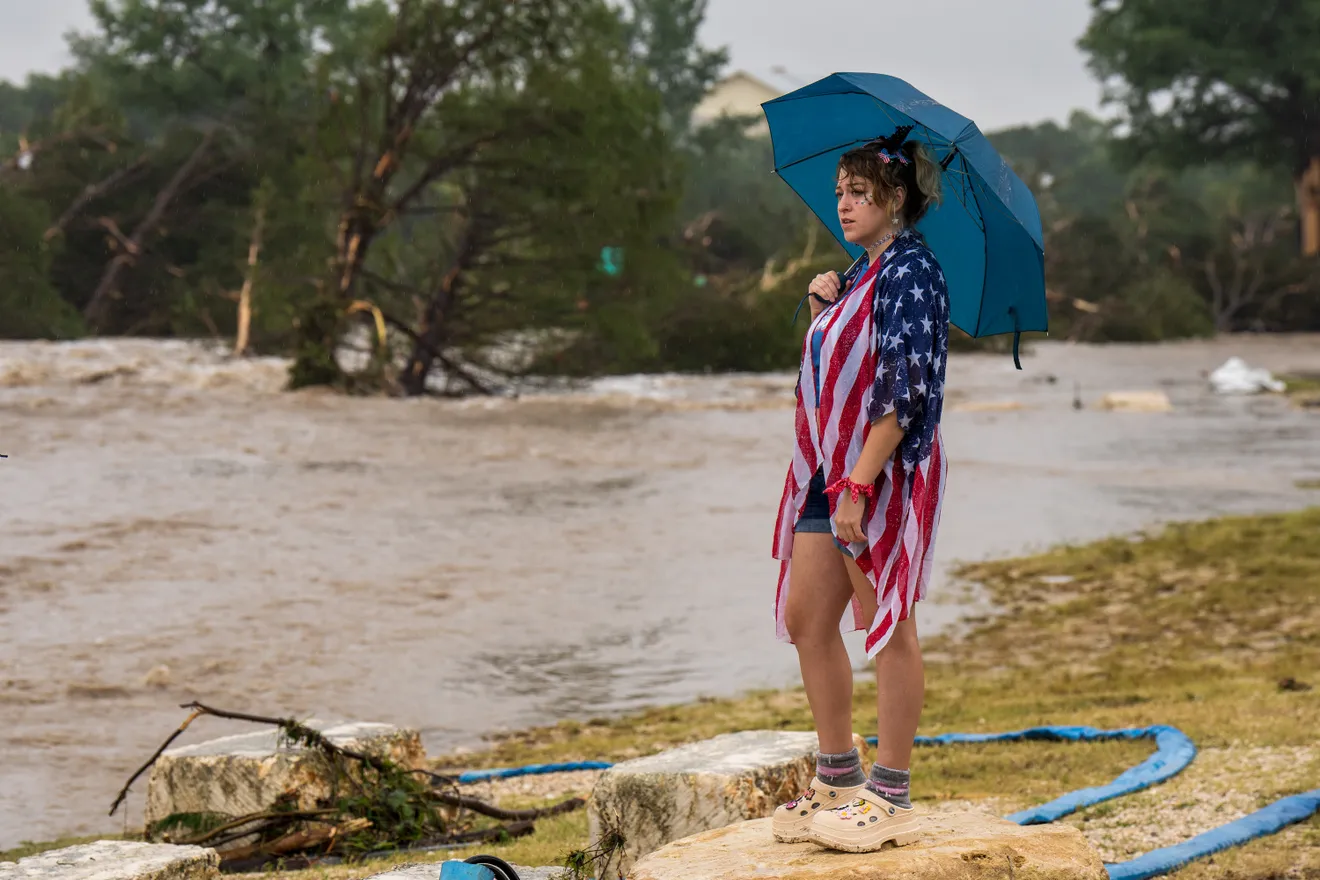In the wake of the catastrophic flooding along the Guadalupe River in Kerrville, Texas, the shocking death toll has reached 80, with at least 28 children among the victims. As families mourn their lost loved ones, a critical question emerges: how could local officials let this tragedy unfold despite years of warnings about the necessity for a flood warning system? The answer lies in a dangerous combination of budget constraints, public apathy, and a severe lack of political will.
Years of Neglect Led to Tragedy
Eight years ago, Kerr County officials debated implementing a flood warning system to protect residents and summer camps situated along the riverbanks. As reported by The New York Times, crucial measures such as sirens and rain gauges were discussed but ultimately dismissed due to budget concerns. With a modest annual budget of $67 million, the county turned down a $1 million grant to establish a much-needed warning system.
The consequences of this negligence were devastating. During the flooding on July 4, residents received delayed text alerts that were often ignored or overlooked. Such warnings, deemed ineffective in a region notorious for flash floods, serve as a grim reminder of the consequences of local governance that prioritizes budget cuts over community safety.
Public Apathy and Taxpayer Resistance
Rob Kelly, the Kerr County judge, expressed that local residents have historically resisted new spending initiatives, claiming “taxpayers won’t pay for it.” This sentiment reveals a troubling trend in rural America where the fear of increased taxes trumps the urgent need for lifesaving infrastructure. As Professor Avantika Gori of Rice University points out, many Texas counties face similar dilemmas, unable to secure the funds necessary for effective flood management systems.

Texas flooding killed at least 24 as the search for Camp Mystic camper…
Government Funding Fails to Address Crisis
The state of Texas is facing a staggering backlog of flood management projects estimated at $54 billion. Yet, as reported by GovTech, lawmakers have only allocated a fraction of that amount—approximately $669 million—toward flood infrastructure initiatives this year. Instead, they chose to approve $51 billion in property tax cuts, further exacerbating the funding crisis that leaves rural communities vulnerable to disasters.
This financial negligence raises critical questions about state priorities and the systemic inequities that shape them. Rural residents, already marginalized economically, are disproportionately affected by the lack of investment in safety infrastructure. They are left to fend for themselves against natural disasters, while urban areas receive more funding and resources.
The Human Cost of Inaction
The human toll of this disaster is staggering. It is not just the numbers that haunt the community but the stories of loss and devastation. For instance, families in Kerr County are grappling with the aftermath of losing children in a flood that could have been mitigated by a timely warning system. This event echoes the 1987 tragedy when a school bus was swept away, killing 10 teens from a church camp. The lessons from past tragedies remain unheeded.
As residents reflect on their experiences, many felt that the existing alert systems were inadequate. Sujey Martin, a Kerrville resident, recounted how she dismissed an emergency alert during the early hours of July 4, believing it was just another routine warning. Such complacency is a direct result of inconsistent emergency notifications and a failure to implement reliable warning systems in a known flood-prone area.

Kerrville Flooding: FULL Saturday afternoon press conference
Call for Accountability and Change
In the aftermath of this tragedy, there is an urgent call for accountability. Former Kerr County commissioner Tom Moser remarked that this event should serve as a wake-up call for other communities. “I think there’s going to be a lot of places in the United States that will look at this event that happened in Kerr County and determine what could be done,” he said.
What remains clear is that a lack of investment in community safety has dire consequences. The failure to prioritize flood warning systems not only endangers lives but also perpetuates a cycle of neglect that disproportionately affects low-income communities. It is time for local, state, and federal governments to prioritize the safety of all citizens, regardless of their geographic location or economic status. Only through comprehensive funding and a commitment to infrastructure can we hope to prevent further tragedies like the one that has devastated Kerr County.


![[Video] Hayli Gubbi volcano in Ethiopia erupts for first time in thousands of years](/_next/image?url=%2Fapi%2Fimage%2Fthumbnails%2Fthumbnail-1763974873320-6wjm4c-thumbnail.jpg&w=3840&q=75)
![[Video] Ethiopia's Hayli Gubbi volcano erupts for first time in 10,000 years](/_next/image?url=%2Fapi%2Fimage%2Fthumbnails%2Fthumbnail-1763962878020-1g659v-thumbnail.jpg&w=3840&q=75)




